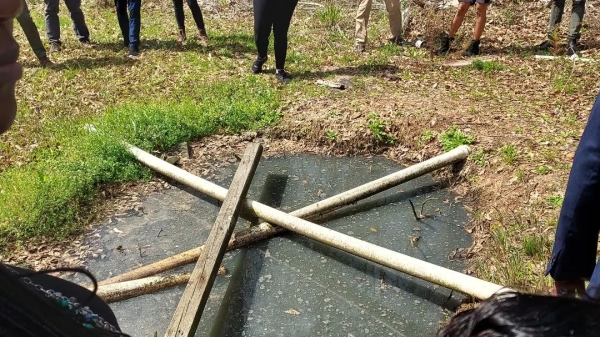“Houston, we have a problem” was a phrase coined on April 14, 1970 by John Swigert, Jr. and James Lowell on U.S.’s Apollo 13 moon flight. The Houston phrase or similar coinage has been used repeatedly by politicians, hospitals and anyone associated with the hospital industry to draw attention to the plight of rural hospitals. There are 122 hospitals in Alabama with 43 being in located in Jefferson, Madison, Morgan, Mobile and Montgomery Counties. Seven rural Alabama counties (Cleburne, Coosa, Henry, Lamar, Lowndes, Macon, and Perry) do not have a hospital. Rural Hospitals are always on the closure edge. Is it money, management, overregulation, image or lack of transparency that creates this problem?
Citizens and cities need their hospital open for jobs, economic development and health care. Are citizens doing their part? Citizens should use the available hospital and/or talk positively about their hospital instead of criticizing their rural hospital when in fact those same citizens may not even have been to that hospital. Positive images are critical for hospitals. The rural hospital may not be John Hopkins or MD Anderson, but they will meet 90 percent of the medical issues. The specialist hospital must have money and a base of patients; rural hospitals do not have either. Rural hospital medical staff can refer a patient to a trauma hospital or specialty hospital if necessary. Citizens should promote a positive image and support the hospital by their voice and money.
Alabama requires every hospital to have a fully staffed emergency room to be licensed to operate. Georgia does not. Emergency rooms are revenue losers for most rural hospitals. The option to operate a rural hospital without an emergency room should be available or reduced hours should be an option. Alabama Department of Public Health can make these changes. Reduced hours are a better option than no operational hours in rural Alabama.
In Alabama, you must have a minimum of 15 beds to be licensed hospital which must be staffed for those beds even if beds are not utilized. Many hospitals will not utilize the beds allowed but staffing costs remain. The national trend today is to have micro-hospitals in rural areas with a few inpatient beds. Patients are treated in the emergency room or hospital operated clinic and sent home. The patient can be admitted overnight for observation, stabilized and transferred to a larger and more comprehensive medical center. Reduced patient beds must be available or more hospitals will not survive due to staffing costs.
New sources of revenue should be found. Rural hospitals could increase their revenue by utilizing those beds for nursing homes, rehabilitation centers, dental, eye clinics and rehabilitation clinics. Empty beds could be used to house immobile or unthreatening inmates to assist in responding to the federal court order that Alabama is under regarding inmate health care. Beds could be used for adult day care if Alabama’s Medicaid Program sought and received a waiver to allow for Medicaid to cover adult day care which is less costly than nursing homes. The veteran’s CHOICE program could be expanded to cover inpatient services for local veterans. Alabama’s four veteran’s medical centers could be used to provide inpatient care for local veterans and specialty inpatient care statewide.
Rural hospitals should rent space to doctors, dentists, podiatrists, specialty practices and other primary care doctors toincrease their non-medical revenue and provide a one stop shop for medical, dental and eyeglass needs. Many other specialty practices will not locate in rural areas due to limitations of space since only need 1 or 2 days a month are needed to sustain the level of patients in that rural area.
Social Security Administration and other federal and state government agencies should be allowed to rent space for hearings and other governmental reasons to generate non-medical revenue. Management’s goal is to increase revenue andmaintain quality medical services. Renting space to non-hospital employed physicians or agencies should be utilized to increase revenue.
Emergency room wait time should be disclosed through social media and internet sites. People will travel to a rural hospital if their travel time and wait time are less. Hospitals need to put an emergency clock on their internet site that indicates the wait time. If you add the wait time to the travel time, generally, it is more time effective to use your local rural hospital. Hospitals don’t tend to use this method to keep the public informed. Bottom-line revenue will increase if their potential patients are kept informed.
Urban hospitals are not always better. Friendly staffs during difficult and stressful times increase revenue since the patient and family will promote a positive image and return customers. Hospitals that have doctors and employees who are friendly tend to have a better image. Management should address the issue with staff. Professionalism and friendliness will result in a better image and more revenue.
Hospitals in rural areas experience a higher mix of Medicare/Medicaid patients than do the facilities in urban areas; but rural hospitals receive a lower amount of reimbursement per patient from Medicare. The Centers for Medicare and Medicaid Services (CMS) assumes hospitals in rural areas will not experience the same labor costs for health personnel services, as do the urban hospitals. Federal law needs to change the reimbursement rate to assist rural hospitals.
Many medical students agree to serve in a rural area in exchange for tuition reduction and scholarships. All agreements have reimbursement agreements. However, the agreements need to have movement restrictions too. Generally, another hospital or medical group can still recruit that physician and pay the reimbursement amount making the agreement non enforceable. Training doctors in rural areas only to be hired away by urban area medical groups should be restricted if the physician transfer agreements are utilized.
Thirty (30) days’ notice to the Alabama Department of Public Health is the only notice required to close a hospital. No notices to the mayor or chairman of county commission are required. It is impossible to find a buyer for a hospital if only 30 days’ notice is required. If you close a hospital it must be inspected and brought up to current standards. The cost would be prohibitive. Ninety days’ notice should be required.
Image, friendliness, non-medical revenue, higher reimbursement rates, time knowledge, less staffing costs, restrictions in rural physician agreements should be utilized. Reducing regulations to allow no emergency room or reduced hours, less than 15 beds and unused space utilization should be considered to increase revenue and reduce costs. If the rural hospital must be closed or sold, require 90 days’ notice before closure.
There is no one change that will reduce rural hospital closures. Steps must be taken other than saying “Houston, we have a problem.”



















































